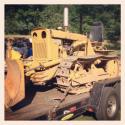
thanks Dr. Perkins, we're coming on our fourth season with our CV drop lines and wasn't looking forward to replacing them next summer. We now can wait a few more years.

Originally Posted by
DrTimPerkins

There is an article in the current
Maple News with information about dropline replacement interval if you are NOT using CV adapters or spouts. While there have been several papers written with related info, and I've specifically addressed this in many presentations, I can't at the moment think of something easy to point to that answers your question about changing droplines with CVs. With that in mind, see the attached figure (below). It shows sap yields in 4 sections of our "main bush" area over the 2013 season. All were dual-conductor systems on one common pump (separate releasers so we can quantify the sap volume) running an average of 25.7" Hg over the season....and not shut off at any point during the season. The different sections have droplines that are new (0 yrs old), 2 yrs old, 4 yrs old, and 10 yrs old. All were tapped with CV2 spouts at the same time and operated exactly the same. There was
no significant difference in sap yields on these systems, with sap yields averaging 30.5 gal/tap. There is no apparent slowdown of sap flow (as we would expect with contaminated systems without CVs) right through the end of the season. In a nearby section of our woods with 8 yr old spouts/drops (non-CV spouts), we got 23.5 gal/tap. In short, age of dropline had no impact on sap yield if using CV spouts, at least out to droplines that were 10 yrs old. At that point it might begin to make sense to replace droplines just due to tubing or fitting breakdown. This would be indicated by breakage or tubing coming off fittings.
Attachment 8686
3x10 Leader Inferno Arch
14,200 Taps
2 - 14 HP Indiana Vacuum pump
1800gph Lapierre RO
10" Lapierre filter press
2 - 25,000 tap Lapierre releasers
3 - SS 1500 gallon tanks
1 - SS 8,400 gallon tank
8x8 Argo ATV
50k John Deere generator
24'x32' sugarhouse













 Reply With Quote
Reply With Quote



